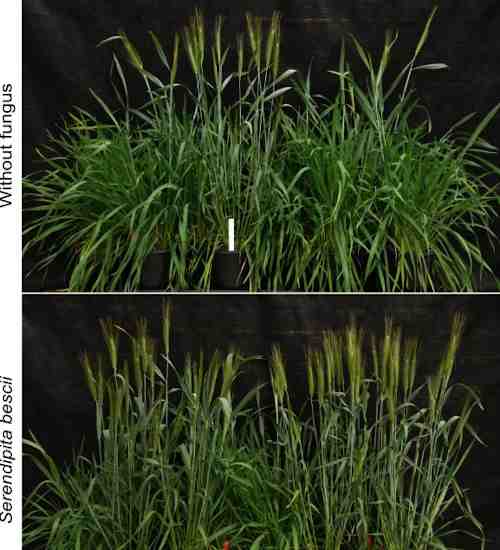By Prasun Ray
Just as people need to remain healthy to perform all the necessary activities of daily life, the health of soil plays a critical role in its ability to support production of food, fuel and fiber. Light, water and healthy soil are three essential natural resources required for agricultural productivity. There is growing, widespread awareness of the impact of human activities in agriculture on soil health and water quality. Due to depletion of the world's natural resources, it is essential to discover technologies that satisfy the requirements of economic, social and agricultural sustainability.
Microorganisms, including bacteria and fungi, that promote plant growth have been used extensively for many years in agriculture to offset fertilizer inputs such as nitrogen and phosphorous. At Noble Research Institute, I work with a special type of plant-growth-promoting fungus called Serendipita bescii, which resides inside plant roots and helps the plant receive nitrogen and phosphorous from soil more efficiently. This type of fungi is known as mycorrhiza (in Greek, “mykós” means fungus and “riza” means roots).
Although Serendipita fungi are well known for improving the growth of agronomically important crops, agriculture hasn’t been able to use them widely because of a shortage of available strains. I have addressed this limitation by isolating a strain of Serendipita called Serendipita bescii from Oklahoma — the first of its kind in North America. This is beneficial because using microorganisms native to U.S. soil would reduce the chance of negative side effects on soil health. For this reason, discovery of Serendipita bescii fills a major gap in field application for improving crop productivity in the United States.

Winter wheat (NF101) infected with Serendipita bescii (bottom) produces more grain heads when compared to uninfected plants (top).
Click here to see more...